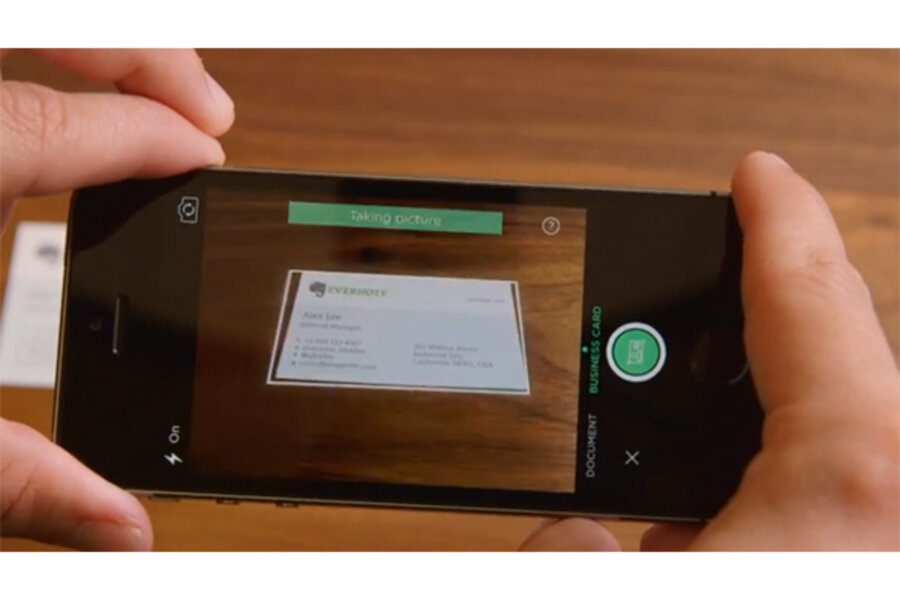LinkedIn and Evernote team up to bring business cards to the digital age
Loading...
The Rolodex is about to be digitized.
Evernote, an organizational app company, and LinkedIn, the career and resume website, are teaming up to connect physical cards with the professional online network. Users can now scan business cards with their mobile phones and Evernote will connect that card with the person’s LinkedIn profile, creating a contact file without the hassle of the physical card.
Evernote announced the move by reiterating that this doesn’t mean the era of physical business cards is over.
“Business cards are how great things start,” writes Andrew Sinkov, vice president of marketing at Evernote in a blog. “Their exchange represents the moment that important partnerships, opportunities, and relationships begin. And even in our hyperconnected lives, business cards are just as relevant as they ever have been. The assortment of cards we collect are a physical tie to people we’ve met, places we’ve traveled, and what we’ve accomplished.”
However, their role has changed with the digitization of the networking process.
“Benefitting from LinkedIn’s network of more than 300 million professionals, Evernote can now automatically build a content-rich note around every business card you scan,” he adds.
Here’s how it works. When you get a business card, open up Evernote’s business card camera mode. The camera will provide a frame, you snap a picture of the business card, and the app will automatically scan for information on LinkedIn. It will then connect to the person’s LinkedIn account and auto-fill information such as phone number, address, email, and company. You can also edit that information later.
From there, you can use Evernote’s other features, such as recording meetings, writing notes, and storing documents and connect it to that contact. “That business card now acts as a visual marker for all the interactions and experiences that followed the initial handshake,” writes Mr. Sinkov. “For the first time, your business cards have the context they deserve.”
Here’s a caveat: Android users, you’re out of luck. Right now this feature is only available on Evernote’s app for iOS, though works on both iPhone and iPad. Android capability is coming soon.
If you’ve been using LinkedIn’s business card scanning feature CardMunch, you’re probably wondering what’s happening to that service. LinkedIn says that CardMunch will cease to exist after July 11, 2014, and CardMunch users have two options. Either you can transfer your contacts to Evernote, where you’ll get two free years of the service (it costs $5 per month for the premium service, which includes card scanning) or transfer it to a digital file to hold onto for later.







